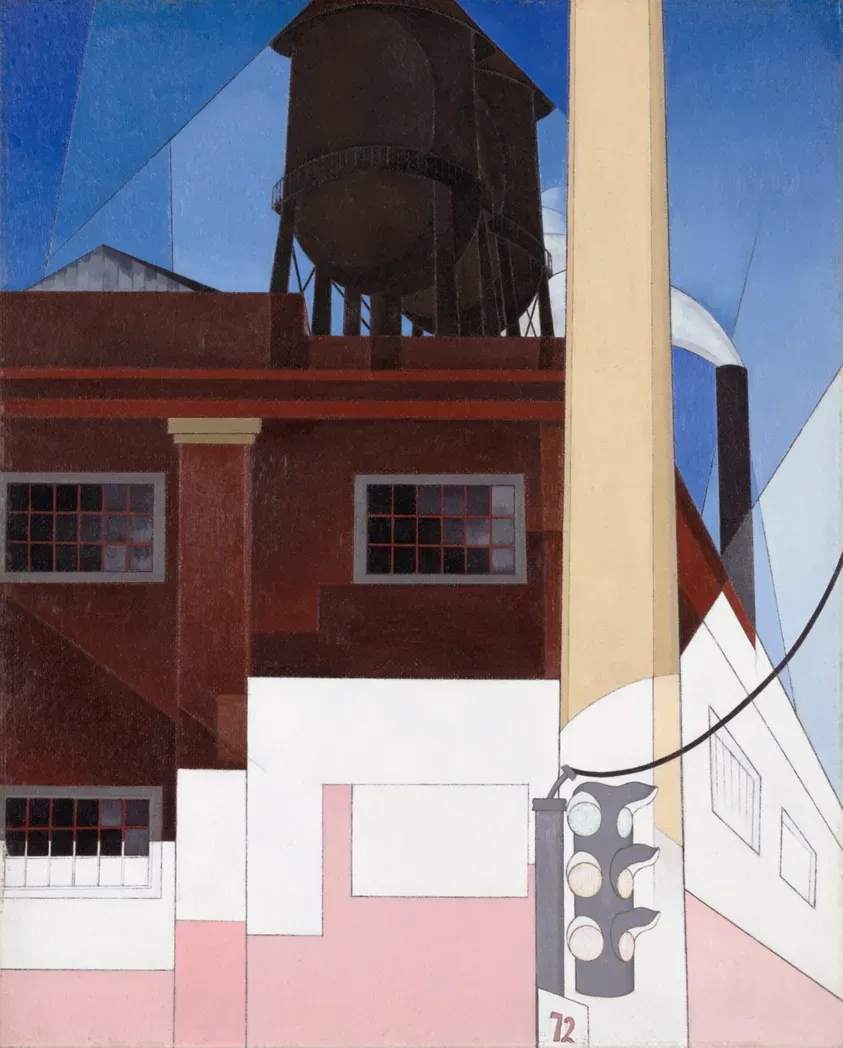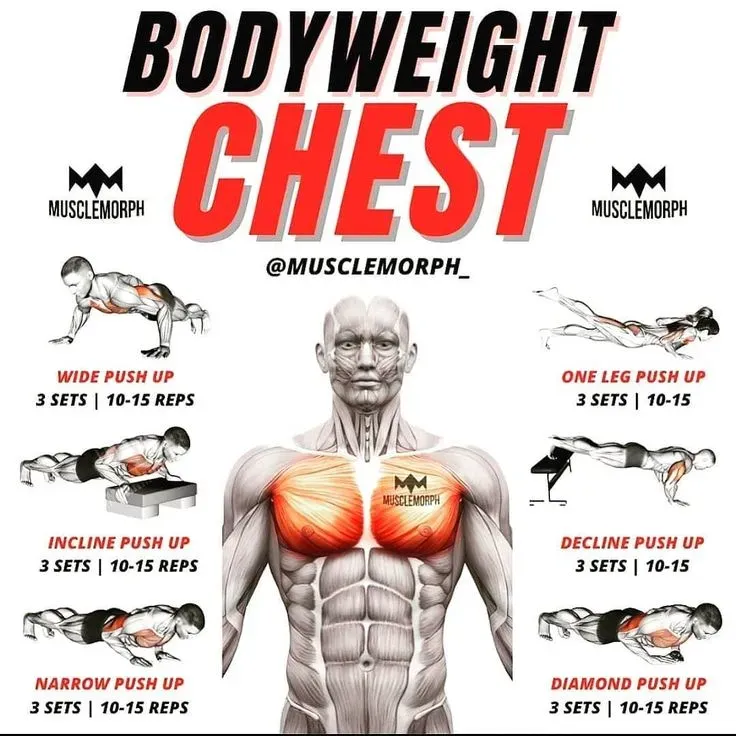Table of Contents
Look, let's be real. Not everyone has a fancy gym membership or a garage packed with weights. Maybe life got busy, maybe the budget is tight, or maybe you just prefer sweating it out in your own space. Whatever the reason, you still want that solid chest, right? That sculpted look that makes shirts fit better and gives you a bit more confidence. You might think building serious chest muscle without barbells or machines is some kind of fitness fantasy. It’s not. You absolutely can get results, and this guide is here to show you how with a focused chest workout at home bodyweight approach.
Why Your Chest Workout at Home Bodyweight is Effective

Why Your Chest Workout at Home Bodyweight is Effective
It's All About Leverage and Tension
let's talk turkey about why you don't need a bench press loaded with plates to build your chest. The core principle of building muscle is progressive overload – consistently challenging your muscles to do more than they're used to. With a chest workout at home bodyweight routine, you achieve this not by adding external weight, but by manipulating leverage and increasing time under tension. Think about it: a standard push-up already forces you to move a significant portion of your body weight against gravity. By changing hand positions, elevation, or speed, you can make that same push-up significantly harder, hitting different parts of the pectoral muscles.
This isn't some new-age fitness guru babble. It's physics. By shifting your center of gravity or reducing your points of contact with the ground, you force your chest, shoulders, and triceps to work harder to stabilize and move your body. It’s a raw, fundamental way to build strength and size. You learn to control your body in space, which is arguably more valuable than just pushing a weight up and down on a fixed path. Plus, it’s incredibly accessible. Your living room floor is your gym.
Beyond Just Building Size: Functional Strength
Sure, a good chest workout at home bodyweight can absolutely pack on muscle, provided you train smart and consistently. But the benefits extend beyond just filling out a t-shirt. Bodyweight chest exercises, especially variations like dive bomber push-ups or pseudo planche push-ups, demand significant core engagement and overall body stability. You're not just isolating a muscle; you're training movement patterns. This translates to real-world strength – the kind you use when pushing a heavy door, carrying groceries, or bracing yourself.
Another often-overlooked benefit? Joint health. Bodyweight movements tend to be more natural and less stressful on your joints compared to lifting heavy external loads with potentially poor form. You develop better body awareness and control. And let's not ignore the sheer convenience and cost savings. No monthly fees, no waiting for equipment, just you, your floor, and the drive to put in the work. It’s a pragmatic approach that delivers tangible results if you commit.
- Builds muscle through leverage and tension
- Increases functional strength and stability
- Improves body control and awareness
- Gentler on joints than heavy lifting
- Zero cost and maximum convenience
- Adaptable to various fitness levels
Designing Your Perfect Chest Workout at Home Bodyweight Routine

Designing Your Perfect Chest Workout at Home Bodyweight Routine
Start with the Basics: Frequency and Structure
Alright, so you're sold on the idea of a chest workout at home bodyweight routine. Great. But how do you actually put it together? You don't just flop on the floor and start doing push-ups until you drop. A solid plan makes all the difference. Think about hitting your chest two to three times a week. This gives your muscles enough stimulus to grow but also crucial time to recover. Recovery is where the magic happens, not just during the workout itself.
Structure your workout. A quick dynamic warm-up is non-negotiable – get the blood flowing, loosen up those shoulders and wrists. Then, pick 3-4 exercises. More isn't always better, especially when you're focusing on quality reps and pushing towards fatigue. For each exercise, aim for 3-4 sets. How many reps? That depends on the exercise difficulty and your current strength. If you can easily do 20+ reps of a standard push-up, it's time to find a harder variation, not just do endless sets of easy ones. The goal is to feel challenged, hitting that sweet spot where the last few reps are a real grind.
Picking Your Moves and Making Them Harder
This is where the fun begins with your chest workout at home bodyweight. You've got a surprising arsenal at your disposal beyond the standard push-up. We'll get into specific exercises soon, but the principle is key: choose variations that challenge you in the 8-15 rep range, maybe a bit higher for warm-up sets. If an exercise feels too easy, change the angle, the hand placement, or add a pause at the bottom. Elevating your feet makes push-ups harder, bringing your hands closer together targets the triceps and inner chest more, and putting your hands on an elevated surface makes them easier (great for beginners).
Progression isn't just about reps. You can slow down the tempo (increasing time under tension), add explosive elements (like clapping push-ups if you're advanced), or combine movements. For instance, doing a set of standard push-ups immediately followed by a set of decline push-ups with minimal rest creates a brutal superset that pushes your muscles past their comfort zone. Keep a log of what you do each workout – reps, sets, variations. This isn't just busywork; it's your roadmap for progress. If you hit 12 reps easily last week, aim for 13 or 14 this week, or move to a slightly harder variation.
Workout Day | Focus | Example Exercises |
|---|---|---|
Day 1 | Strength/Explosive | Standard Push-ups, Decline Push-ups, Plyo Push-ups |
Day 2 (Optional) | Volume/Endurance | Incline Push-ups, Wide Push-ups, Diamond Push-ups |
Consistency and Listening to Your Body
Look, the best plan in the world is useless if you don't stick to it. Consistency is the absolute bedrock of any successful fitness routine, especially a chest workout at home bodyweight plan. Aim to hit your scheduled workouts even when you don't feel like it. Some days will be harder than others, and that's okay. Just get the work in. Short, imperfect workouts are infinitely better than skipping them entirely.
Equally important is listening to your body. Pushing hard is necessary for growth, but pushing through sharp pain is just dumb. If something feels off, back off. Maybe it's just needing an extra day of rest, or maybe you need to modify an exercise. Don't be afraid to take a deload week every month or two, where you reduce the volume or intensity. This allows your body and nervous system to fully recover and prevents burnout or injury. This isn't a race; it's a long game. Play it smart, stay consistent, and the results will follow.
Essential Bodyweight Chest Exercises for Home

Essential Bodyweight Chest Exercises for Home
The Foundation: Push-Up Variations
Alright, let's get down to the brass tacks of your chest workout at home bodyweight. You can't talk bodyweight chest without starting with the humble push-up. It's the bedrock, the absolute essential. But don't think it's just one move. The standard push-up, hands slightly wider than shoulder-width, hitting the floor with your chest, is your starting point. It works the entire chest, shoulders, and triceps. Get good at these first, focusing on controlled movement, keeping your body straight as a board, no sagging hips or piked butts.
Once you can comfortably bang out 15-20 solid reps, it's time to mix it up. Wide grip push-ups put more emphasis on the outer chest. Diamond push-ups, with your hands close together forming a diamond shape, absolutely torch the triceps but also hit the inner chest hard. Incline push-ups (hands on an elevated surface like a table or counter) make it easier, perfect if you're just starting out. Decline push-ups (feet on an elevated surface like a chair or couch) ramp up the difficulty and target the upper chest more. See? Same basic movement, totally different challenge.
Adding Difficulty and Angles
So you've mastered the basic push-up variations for your chest workout at home bodyweight? Excellent. Time to make things interesting. Pseudo planche push-ups, where you lean your body forward over your hands, putting more weight on your palms and shoulders, are brutal and build serious strength, especially in the upper chest and shoulders. Archer push-ups, where you shift your weight to one arm while the other extends out to the side, are a great way to build towards single-arm push-ups, demanding immense unilateral strength and stability.
Don't forget about tempo and pauses. Lowering yourself slowly over 3-5 seconds (eccentric training) increases time under tension and creates micro-tears necessary for growth. Pausing for a second or two at the bottom of the push-up eliminates momentum and forces your muscles to work harder to initiate the movement. These aren't fancy exercises; they're just smart ways to make the exercises you already know much more effective.
- Standard Push-ups: The foundational chest builder.
- Wide Grip Push-ups: Targets outer chest.
- Diamond Push-ups: Hits inner chest and triceps.
- Incline Push-ups: Easier variation, targets lower chest slightly.
- Decline Push-ups: Harder variation, targets upper chest.
- Pseudo Planche Push-ups: Advanced, hits upper chest/shoulders hard.
- Archer Push-ups: Builds unilateral strength, progression towards one-arm.
Other Powerful Bodyweight Chest Moves
Beyond the standard push-up family, there are other effective moves for your chest workout at home bodyweight. Dips, if you have parallel bars or sturdy chairs, are phenomenal for the lower chest and triceps. Lean forward slightly to target the chest more. They recruit a lot of muscle mass and allow for a deep stretch at the bottom. If you don't have parallel bars, chair dips with your feet on the floor or another chair work, though they target triceps more unless you can really lean forward.
Another one to consider is the pike push-up, which is primarily a shoulder exercise but also hits the upper chest, especially as you get closer to a handstand push-up. Start with your hips high in the air, forming an inverted V shape. Walk your hands back towards your feet until you feel a stretch in your hamstrings and shoulders. Lower your head towards the floor between your hands. It's a tough move that builds overhead pressing strength, which complements your horizontal pressing from push-ups.
Taking Your Home Chest Workout to the Next Level

Taking Your Home Chest Workout to the Next Level
Increasing Intensity Without Adding Weight
so you've built a solid foundation with your chest workout at home bodyweight. Standard push-ups are feeling a bit too easy, and you're looking for that next challenge. This is where you get creative with intensity. Forget just adding more reps forever. That hits endurance, not necessarily strength and size beyond a certain point. You need to make the reps you *do* harder. One simple way is controlling the tempo. Try lowering yourself slowly for a count of three or four seconds. That controlled negative (eccentric phase) really forces your muscles to resist gravity and creates significant tension. It feels completely different from just dropping down.
Another killer technique is adding pauses. Hold the bottom position for a full second or two, with your chest hovering just above the floor. This eliminates any momentum and makes initiating the push back up significantly tougher. You can also add a pause halfway up or at the top, squeezing your chest muscles. These small tweaks might not look as impressive as stacking plates, but they are incredibly effective at increasing the demand on your muscles and forcing adaptation. It's about quality over quantity, making every single rep count.
Exploring Advanced Variations and Combinations
Once you're comfortable manipulating tempo and adding pauses in your chest workout at home bodyweight, it's time to explore more complex movements or combine existing ones. Remember those pseudo planche push-ups we talked about? Leaning forward dramatically shifts the leverage and hammers the upper chest and shoulders. Archer push-ups build towards single-arm strength. These require more control and stability but offer a fantastic way to keep progressing.
Don't be afraid to mix and match exercises within a set or workout. Supersetting two different push-up variations, like standard push-ups followed immediately by decline push-ups, is a brutal way to increase volume and fatigue the muscles quickly. Circuit training, where you move from one exercise to the next with minimal rest, keeps your heart rate up and adds a conditioning element. The key is to keep challenging the muscles in new ways. If you always do the same three sets of ten standard push-ups, your body will adapt, and progress will stall. Variety isn't just the spice of life; it's the engine of muscle growth.
- Slow down the lowering phase (eccentric)
- Add pauses at the bottom, middle, or top
- Try Pseudo Planche or Archer push-ups
- Perform supersets (e.g., Standard + Decline push-ups)
- Incorporate circuit training for intensity
- Experiment with explosive push-ups (if ready)
Integrating Plyometrics and Focusing on Recovery
To really elevate your chest workout at home bodyweight, consider adding plyometric push-ups. These are explosive movements like clapping push-ups (pushing off the floor with enough force to clap your hands) or even just pushing off the floor powerfully. Plyometrics build explosive strength and power, adding another dimension to your routine. Just be careful and build up to these gradually; they are high-impact and require a solid strength base first. Start with simpler versions like elevated plyo push-ups (hands on a box) before attempting them on the floor.
Finally, and perhaps most importantly, remember recovery. Pushing yourself harder means your muscles need more time to repair and grow. Ensure you're getting enough sleep and fueling your body with adequate protein. Don't hammer your chest seven days a week. Two to three challenging workouts are usually sufficient. Listen to your body – if you're feeling completely drained or have nagging joint pain, take an extra rest day or do a lighter session. Pushing through true fatigue or pain is counterproductive and risks injury, which will halt your progress faster than anything else.
Troubleshooting and Consistency for Your Bodyweight Chest Workout at Home

Troubleshooting and Consistency for Your Bodyweight Chest Workout at Home
Alright, let's talk about the grind, because let's face it, sticking to any workout, especially a Troubleshooting and Consistency for Your Bodyweight Chest Workout at Home plan, isn't always sunshine and rainbows. You're going to hit plateaus. There will be days you just don't feel like doing a single push-up, let alone figuring out why your form suddenly feels wonky. Maybe your wrists hurt, or you can't seem to add reps to that decline push-up variation. This is where most people throw in the towel. But this is also where consistency becomes your superpower. Don't aim for perfection; aim for persistence. If you miss a workout, don't beat yourself up; just make sure you hit the next one. If an exercise feels wrong, stop and analyze your form – maybe record yourself or just slow down and really focus on the movement. Sometimes the simplest fix is just being more mindful of what your body is doing. And if you're stuck on progress, revisit the intensity techniques we discussed – slow negatives, pauses, or trying a slightly harder variation. It's rarely about needing a magic bullet; it's usually about smart adjustments and refusing to quit when things get a little tough.
Your Chest, Your Home: Making Bodyweight Work
So there you have it. Building a capable, strong chest doesn't require elaborate gear or a monthly fee. Your chest workout at home bodyweight is a legitimate path to progress, provided you approach it with structure and consistency. We've laid out the foundational exercises, discussed how to piece together a routine, and touched on pushing past the initial plateaus. It's not magic; it's applying proven principles to what you have available. Stick to the plan, focus on form and progressive overload, and you'll find that your own body offers plenty of resistance to build the chest you're aiming for, no gym required.
